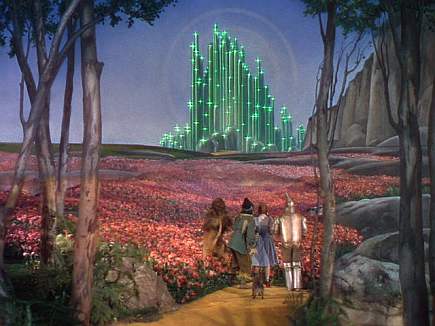
Posted on 05/28/2011 4:59:40 PM PDT by LibWhacker
MORE proof that space is amazing, this time from the not-too-distant constellation of Orion, where one star is currently being bombarded with green crystal rain.
The embryonic star is described as "Sun-like" - as in our Sun - and named HOPS-38.
The crystals are a green mineral called olivine and have been spotted raining down from the clouds of gas engulfing HOPS-68 by NASA's Spitzer infrared detectors.
Olivine can be found on Earth, in gemstones and on the green sand beaches of Hawaii. They've also been spotted before by NASA's Stardust and Deep Impact comet-watchers, but this is the first time they've ever been observed falling as "rain".
[*snip*]
“If you could somehow transport yourself inside this protostar’s collapsing gas cloud, it would be very dark,” the study team's lead author Charles Poteet said.
“But the tiny crystals might catch whatever light is present, resulting in a green sparkle against a black, dusty backdrop."
[*snip*]
(Excerpt) Read more at news.com.au ...
is it HOPS 38 or 68??
Cause I am sending a package nd I need the correct address...
Popular Science, a few months ago, answered the question, “What happens if you eat a teaspoon of a white dwarf star?”
The basic answer was, “Nothing good.”
You mean "when you're dead", don't you?

Yeah, old finger, slow mind.
Join the club. I’m a member.
“I’ve seen things you people wouldn’t believe: Attack ships on fire off the shoulder of Orion; I’ve watched C-beams glitter in the dark near the Tannhauser Gate. All those moments will be lost in time, like tears in rain. Time to die.”

I object to a Spitzer anything ......the guy was a complete fraud, and for proof, he’s on CNN. I rest my case.
Bladerunner
It's raining Gems!
A constellation is a portion of the sky as seen from the earth within precisely delineated boundaries--a few relatively bright stars in that area may be what we generally think of as the constellation, but anything in that area no matter how far away is in the constellation, even galaxies billions of light-years away.
>> NASA’s Spitzer infrared detectors.
Red light detectors... interesting.
The NASA report couldn’t say it was Kryptonite for obvious reasons.
“some of the most magical sights in the entire universe: astral starbursts creating a myriad celestial bodies against a timeless royal blue backdrop”
Disclaimer: Opinions posted on Free Republic are those of the individual posters and do not necessarily represent the opinion of Free Republic or its management. All materials posted herein are protected by copyright law and the exemption for fair use of copyrighted works.